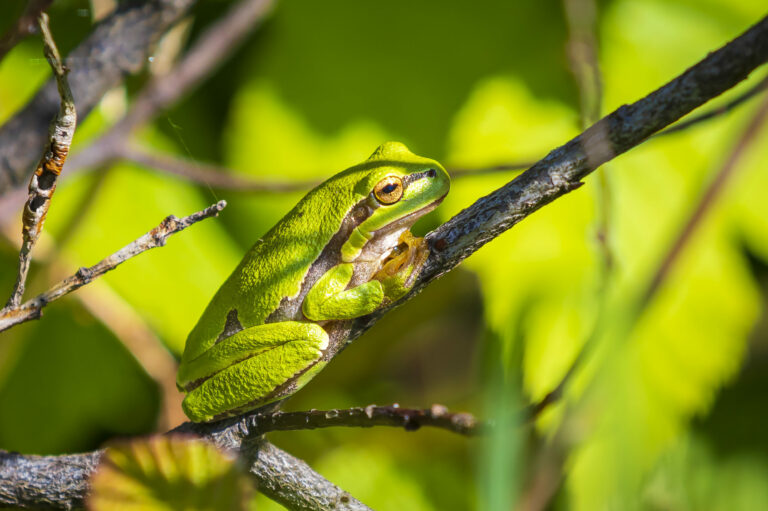Hyla arborea

The European tree frog (Hyla arborea) reaches a head-body length of 4-5 cm. The upper side of its body is usually grass green but can also be blue, brown, or gray (Glandt 2016). On the sides, there is a dark-colored band that runs from the nostril to the vicinity of the hind leg, which hooks upward at the end, earning it the name “hip sling.” The males have wrinkled throats. The European tree frog inhabits open forests, moist meadows, pastures, hedges, and seeks stagnant water bodies for breeding. Reproduction begins between May and June, after which adult frogs move away from the breeding sites and spend the rest of the summer mostly in bushes or on trees. Predators of the tree frog include various bird species such as owls or herons, as well as grass snakes. Threats to tree frog populations can include the loss or destruction of suitable habitats and road mortality during migration to or from breeding sites (Glandt 2018).
Diet: The European tree frog feeds on insects such as flies or beetles, as well as spiders and land snails (Glandt 2018).
Threat status: The IUCN Red List classifies the European tree frog as “least concern” globally but notes a decline in populations. In Germany, this species is considered endangered. Under the FFH Directive, Hyla arborea is “protected” throughout Europe, and it is “strictly protected” under the Federal Nature Conservation Act.
-
Glandt, D (2016)Amphibien und Reptilien. Berlin, Heidelberg: Springer Berlin Heidelberg.
-
Glandt, D (2018)Praxisleitfaden Amphibien- und Reptilienschutz. Schnell – präzise – hilfreich. Berlin, Heidelberg: Springer Berlin Heidelberg.